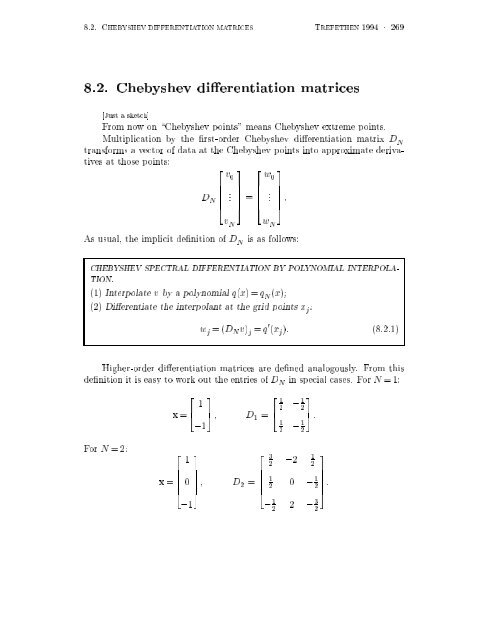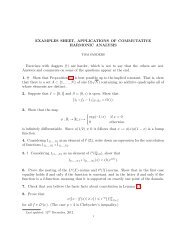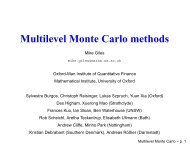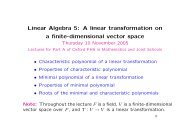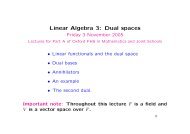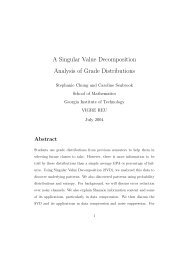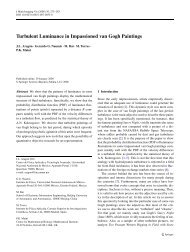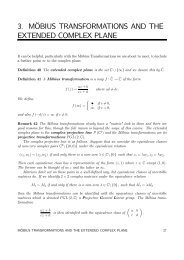Chapter 8. Chebyshev spectral methods
Chapter 8. Chebyshev spectral methods
Chapter 8. Chebyshev spectral methods
Create successful ePaper yourself
Turn your PDF publications into a flip-book with our unique Google optimized e-Paper software.
<strong>8.</strong>2. CHEBYSHEV DIFFERENTIATION MATRICES TREFETHEN 1994 269<br />
<strong>8.</strong>2. <strong>Chebyshev</strong> di erentiation matrices<br />
[Just a sketch]<br />
From now on \<strong>Chebyshev</strong> points" means <strong>Chebyshev</strong> extreme points.<br />
Multiplication by the rst-order <strong>Chebyshev</strong> di erentiation matrix DN transforms a vector of data at the <strong>Chebyshev</strong> points into approximate derivatives<br />
at those points:<br />
2 3 2 3<br />
v0 w0 D N<br />
6<br />
4<br />
.<br />
v N<br />
7<br />
5 =<br />
6<br />
4<br />
.<br />
w N<br />
As usual, the implicit de nition of D N is as follows:<br />
CHEBYSHEV SPECTRAL DIFFERENTIATION BY POLYNOMIAL INTERPOLA-<br />
TION.<br />
(1) Interpolate v by a polynomial q(x)=q N (x)<br />
(2) Di erentiate the interpolant atthe grid points x j :<br />
7<br />
5 :<br />
w j =(D Nv) j = q 0 (x j): (8:2:1)<br />
Higher-order di erentiation matrices are de ned analogously. From this<br />
de nition it is easy to work out the entries of D N in special cases. For N =1:<br />
For N =2:<br />
x =<br />
2<br />
3<br />
7<br />
x =<br />
6<br />
4 1<br />
5 D1 =<br />
;1<br />
2<br />
6<br />
4<br />
1<br />
3<br />
7<br />
0<br />
7<br />
5<br />
;1<br />
D2 =<br />
2<br />
6<br />
4<br />
2 1<br />
6 2 ;<br />
4<br />
1 2<br />
1<br />
2 ; 1 3<br />
7<br />
5:<br />
2<br />
3 2 ;2 1 2<br />
3<br />
7<br />
1<br />
2 0 ; 1 2<br />
; 1 2 2 ; 3 7<br />
5<br />
2<br />
:


